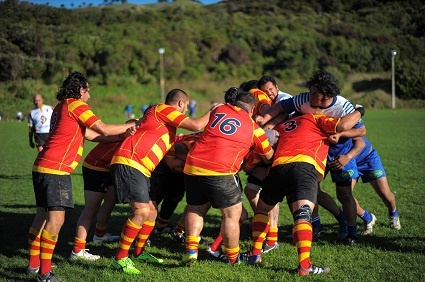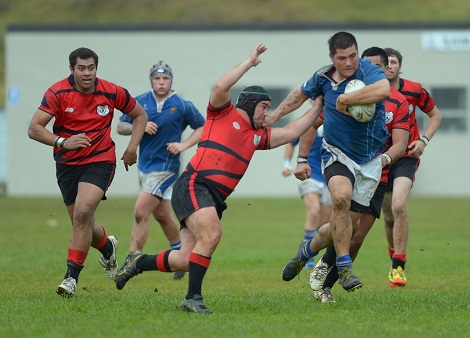- Rugby Toolbox
- Resources & Education
- Learn more
- Articles
- Snook on Coaching
- Manipulation vs Physicality
- Ruck & Run Drill
- Playing Philosophy – Ruck & Run Coaching Components
- Playing Philosophy – Spread the Forwards
- Playing Philosophy – A forward behind the ruck
- Playing Philosophy – Ruck & Run
- Playing Philosophy – An idea!
- The Breakdown
- Building Positivity [3]
- Building Positivity [2]
- Building Positivity
- Fitness and Game Related Activities
- Getting the Head Working
- Missiles are Dangerous
- Use of Video
- Winger Attacking Outside First-Five
- Player Profiling
- Selection
- Fitness Away from the Team Session
- Playing Philosophy (Pre season Prep)
- Coaching the Coaches
- The Rugby Coordinator and Pre-Season Preparation
- Why Not Use Tap Penalties More Often?
- Why Kick the Ball Down the Middle of the Field?
- Defending the 5 Metre Lineout Drive
- Scoring from the 5 Metre Lineout
- What are the Kicking Team Aiming to Achieve from Halfway Restart
- Should We Practice Scoring Tries?
- Team Culture
- Looking After Your Players
- Coach Survival Tips
- Under 11/13 – Backline Defence
- Under 11/13 – Ruck Defence
- Under 11/13 – Back Attack
- Under 13 – The Counter Attack
- Under 11/13 – The Maul
- Under 11/13 – Lineouts
- Under 11/13 – Decision Making
- Under 11/13 – Support Play
- Under 11/13 – Dive Pass and More
- Under 11/13 – Drop & Grubber Kick /Highball Catch
- Under 11/13 – Front on Tackling
- Under 11/13 – Contact – Getting Up – The Ruck
- Under 11/13 – The Coaching Session
- Under 8/10 – Using Space
- Under 8/10 – Kicking
- Under 8/10 – Contact and Picking Up the Ball
- U8/U10 Draw & Pass and Sidestep
- Under 8/10 – The Tackle
- Under 8/10 – The Coaching Session
- Under 7 – Test Your Coaching – Support Play
- Tap Pass and Swerve U7
- Ball Familiarisation; Passing & Receiving
- Activities for the Non-Contact Tackle
- Under 7 – The Coaching Session
- Coaching Teenagers – After the Ruck
- Coaching Teenagers – The Practice Session
- Coaching Teenagers – Best Practice
- Coaching Kids – Best Practice
- Plays from a Tap Penalty
- Running Plays from a 5 Man Lineout
- Driving Plays from a 5 Man Lineout
- Strike Plays at the End of the Lineout
- Back Strike Plays at the Lineout
- Wide Strike at the Scrum (2)
- Wide Strike at the Scrum
- Midfield Attack at the Scrum
- No 8 Plays at the Scrum (2)
- No 8 Plays at the Scrum
- The Cut Out Pass
- Skills to Penetrate (2)
- Skills to Penetrate
- Movements to Penetrate
- Patterns to Penetrate
- Contact and Continuity
- Keeping the Ball Alive Out Wide
- Pre Season Support Activities
- Checklist
- Understanding the game
- The Playing Philosophy
- The Lineout
- Overview
- Team Profile
- Start Now!
- Backrow
- Nine and Ten
- Rugby-related Fitness Activities
- The Psychological Edge
- Open Field Play
- Key Performance Indicators
- Improving Team Performance
- Backline Attack Concepts
- Tactics at Phase Play
- Playing Philosophy
- The ‘Stop Focus’
- Kick Attack
- Clearing the 22
- Wide Attack at Phase
- Player Focus
- Scrum Preparation
- Lineout Preparation
- Back Attack Preparation
- Sevens Preparation
- Sevens Kick Offs
- Sevens Scrum and Lineout
- Sevens Attack Patterns
- Sevens Defence
- 7's Selection and Game Planning
- Coaching and Leadership
- How the Game Evolves
- Changing Within the Game
- Learning from the Television.
- Using Tap Penalties Wisely
- Defence Drills
- Defence Drills for Tight Five
- Team Defence and TUB’ing
- Establishing Patterns from the Ruck
- Structured Phase Play
- Structuring Phase Play on the Run
- Coaching Roles
- Structuring a Close in Tackling/Defensive Session
- Coaching in Threes
- Attacking Back Play
- Kick Off Chase
- Wrap Around Back Plays
- Lineout Plans
- Looking and Learning
- Motivating Your Players
- Scrum Attack
- Refocusing the Team
- Monitoring the Progress
- Learning the Game
- Playing to the Laws
- Small is OK
- Decisions After the Tackle
- Improving Your Coaching
- Food for Thought
- More Food for Thought
- Passing & Catching
- How Ireland Nearly Beat the All Blacks
- The Progressive Coach
- Try Something New
- Encouraging Excitement
- The Mental Approach
- Where to Start
- Being the Best You Can Be
- Off the Ball Decisions
- Lineouts Difficult to Master
- Decisions on the Run
- Rucking and Rolling
- A Successful Approach
- Gaining Clarity
- Manipulation vs Physicality
- Beating the Drift
- To Ruck or Not to Ruck
- Stopping the Lineout Drive
- Fine Tuning the Planning
- It's a Running Game
- RugbySmart 2015
- Using the Shoulders
- Loosehead Prop / Tighthead Prop
- Position Specific – Hooker
- Position Specific – Lock
- Position Specific – Blindside Flanker
- Position Specific – Openside Flanker
- Position Specific – No 8
- Position Specific – Halfback
- Position Specific – First Five Eighth
- Position Specific – Second Five Eighth
- Position Specific – Centre Three-quarter
- Position Specific – Wing
- Position Specific – Fullback
Manipulation vs Physicality

With much of the attacking emphasis in backplay changed from being able to manipulate a defence and getting the ball in to space with support runners, to attacking through physicality and rucking, it is worth considering ways in which to keep players in roles they are good at.
In other words make a plan to keep backs on their feet as much as possible and in positions to launch attacks and keep them out of rucks.
Nowadays it takes a series of rucks and everything going well before the attackers end up with a back matching up against a forward. In many cases the set piece almost becomes irrelevant as a ruck is set up as a 'settler' before any real thought of attack takes place. By then attacking backs are in rucks and defenders have a solid line across the field.
As a thought if your team is going to hit up at first phase maybe the three loose forwards and three backs could start in opposite roles so that the backs arrive on their feet and ready to run. Something like this could worth a trial! Creativity in rugby!
Of course the best way to use the backs is from set play scrums and full lineouts where backs are encouraged to beat an opponent through agility, changes of pace and angles, using plays that involve variations in passing, creating extra runners through well thought out support lines, and keeping the ball alive.
If the concept behind back attack from set play is to avoid contact rather than to create it then you are well on the way to producing a backline that can manipulate. Lots of thought behind running speeds and direction of both the ball carrier and support players needs to be planned and practiced.
If you really are an innovative type you could consider any number of backline formations, running through starting positions and what and how you want to achieve via what each players role is to create space in which another player will turn up at the designated time.
If the ball is to be carried in to contact then the plan is to have the forwards doing this. At scrum time the backrow need to set up the first ruck with a fast arriving second row and closest lock providing the second platform. It might not be considered the 'modern way' but it is worth a look at having the three loose forwards working as a trio and on the same side of the field.
After two rucks, assuming they are relatively close and going the same way, the defence should have a couple of backs in the ruck area and the attacking backline should be intact. With the hooker and props acting as safety valves running behind the backline this unit should now start the pattern best suited to the attack zone. In other words, those fancy plays carried out directly from set play can be carried out this time from the second ruck.
The object is to get in behind the defence and keep the ball alive. At any breakdown the loose forwards could all be attacking the same side with the front row being the ball gatherers at the tackle.
At a short lineout the plan must be the same with the aim being to create the second ruck on about the 15m line.
A full lineout will require a drive , a short pass to the two forwards who have stayed out and who attack in close, with the next group driving around and targeting the backs where possible. Then it is 'backs ball'.
Build up this simple pattern and practice and fine tune it. The main objective is to have backs on their feet and ready to attack.
Of course rugby is such a fluid game that the overall strategy of keeping the backline intact will often not be achieved. Remembering that once a player commits to a breakdown he is effectively out of the play for a couple of phases it is important that forwards should be used in this role as often as possible which will demand much more running in to the critical zones and not just standing and waiting for the ball to come to them.
The concept of more running off the ball is crucial to the game and in this case it's a bit like the old days when forwards were asked to attend all the rucks.
Of course the simplicity of the concept requires the attack to move the ball to space and ultimately have more support players available than the opposition have defenders, so once again the concept of running off the ball to create numbers is crucial. In fact players often need to get to the opposite side of the ruck if they are to be effective.
The interchangeability of players roles these days will most likely determine that some of the pack are more adept at attacking with the ball than some of the backs. If the philosophy is to use midfielders for example to create the 'go forward' make sure in your planning that the best ball runners are the players at third phase receiving the ball. Some players are best suited to cleaning out yet they are often the players who receive the ball just as the adrenalin levels should be pumping!
It will be worth playing around with this overall philosophy of backs being on their feet and see what you come up with. It could make a big difference to your attacking successes.